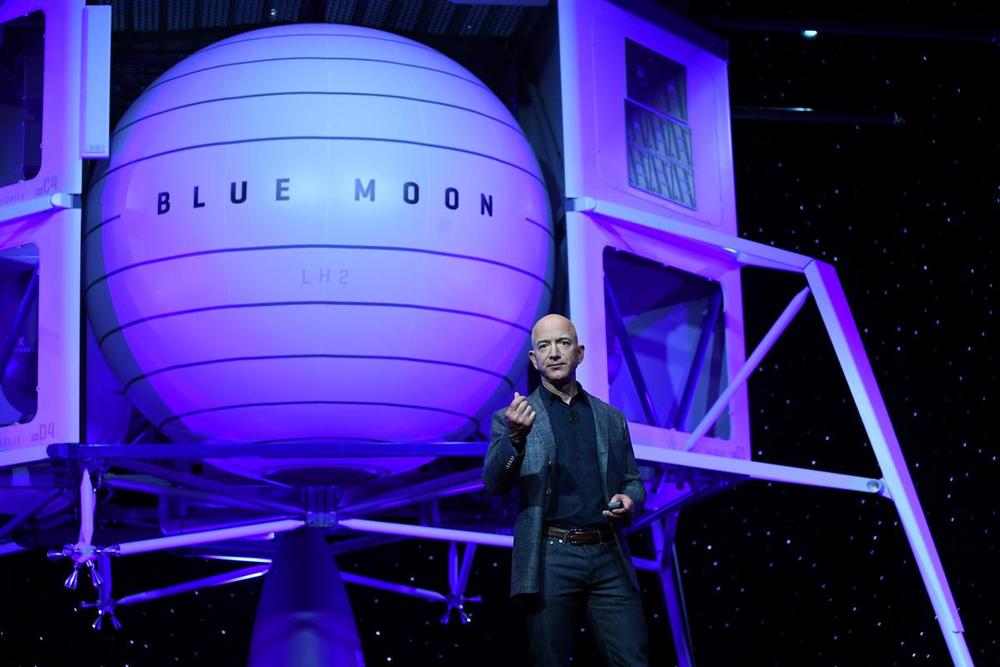“This vehicle is going to the moon,” Bezos said during an invite-only presentation to media and space industry executives.
“We were given a gift — this nearby body called the moon,” Bezos said. He added that the moon is a good place to begin manufacturing in space due to its lower gravity than the Earth. Getting resources from the moon “takes 24 times less energy to get it off the surface compared to the Earth,” Bezos said, and “that is a huge lever.”
The Blue Moon lander can bring 3.6 metric tons to the lunar surface, according to Bezos.







